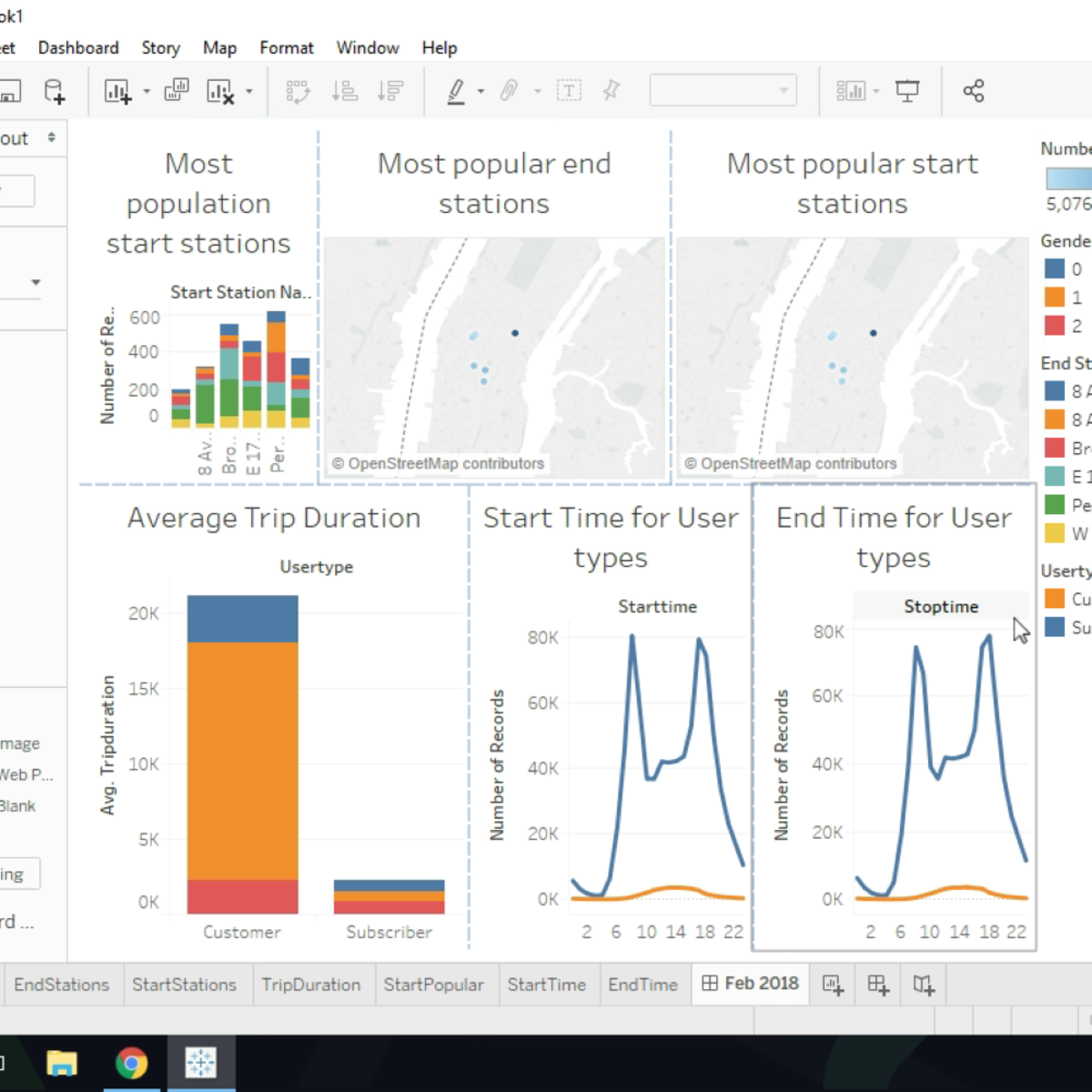Back to Courses









Business Essentials Courses - Page 20
Showing results 191-200 of 645

Decision-Making and Scenarios
This course is designed to show you how use quantitative models to transform data into better business decisions. You’ll learn both how to use models to facilitate decision-making and also how to structure decision-making for optimum results. Two of Wharton’s most acclaimed professors will show you the step-by-step processes of modeling common business and financial scenarios, so you can significantly improve your ability to structure complex problems and derive useful insights about alternatives. Once you’ve created models of existing realities, possible risks, and alternative scenarios, you can determine the best solution for your business or enterprise, using the decision-making tools and techniques you’ve learned in this course.

Finance for Non-Finance Professionals
This short course surveys all the major topics covered in a full semester MBA level finance course, but with a more intuitive approach on a very high conceptual level. The goal here is give you a roadmap and framework for how financial professional make decisions.
We will cover the basics of financial valuation, the time value of money, compounding returns, and discounting the future. You will understand discounted cash flow (DCF) valuation and how it compares to other methods. We also step inside the mind of a corporate financial manager and develop the basic tools of capital budgeting. We will survey the how, when, and where to spend money, make tradeoffs about investment, growth, dividends, and how to ensure sound fiscal discipline. Our journey then turns to a Wall Street or capital markets perspective of investments as we discuss the fundamental tradeoff between risk and return. We then synthesize our discussion of risk with our valuation framework and incorporate it into series of direct applications to practice.
This course requires no prior familiarity with finance. Rather, it is intended to be a first step for anyone who is curious about understanding stock markets, valuation, or corporate finance. We will walk through all of the tools and quantitative analysis together and develop a guide for understanding the seemingly complex decisions that finance professionals make.
By the end of the course, you will develop an understanding of the major conceptual levers that push and pull on financial decision making and how they relate to other areas of business. The course should also serve as a roadmap for where to further your finance education and it would be an excellent introduction of any students contemplating an MBA or Finance concentration, but who has little background in the area.

Renewable Energy Projects
Understanding renewable energy technologies is important, but equally important is knowing how to effectively deploy these technologies to provide renewable energy to end-users – the topic of this course. Upon completion of the course, you will understand the development and management of renewable energy projects, large and small, from conception to launch and subsequent operation.
This course will teach you to plan, execute, and operate renewable energy projects such as solar PV plants, wind farms, and geothermal generators. We first describe how to develop a renewable energy feasibility study and make go-no-go project decisions. We then examine project site selection and evaluation of renewable technology alternatives and technology vendors. Next, we review methods for financing and organizing renewable energy projects. The course concludes with an examinations of project construction, operations and maintenance, repowering, and plant decommissioning. These capabilities will round out your understanding of renewable energy uses and deployment – come join us!
Note that this course is the third in a four-course Coursera specialization in Renewable Energy:
1. Renewable Energy Technology Fundamentals
2. Renewable Power Systems
3. Renewable Energy Projects
4. Renewable Energy Futures

Visualizing Citibike Trips with Tableau
In this 1-hour long project-based course, you will learn the basics of using Tableau Public software to visualize Citibike Trips Dataset. By the end of this project, you will have created a few visualizations and a collection of visualizations called a dashboard.
Note: This course works best for learners who are based in the North America region. We’re currently working on providing the same experience in other regions.

Establish Company Training Initiatives with Canvas
In this 2-hour long project-based course, you will be able to create pages and modules within the Canvas LMS. This will benefit your business as you will be able to input training content into pages and then organize the pages into comprehensible chunks for your team. You will also learn how to view specific user analytic details.
Note: This course works best for learners who are based in the North America region. We’re currently working on providing the same experience in other regions.

Marketing Analytics Foundation
This course lays the foundation of marketing analytics. You’ll learn the basic principles of marketing. You’ll learn the role analytics plays in digital marketing and how data is collected and managed for marketing. You will also learn basic privacy regulations that govern the online marketing space as well as common challenges when working with marketing data.
By the end of this course you will be able to:
• Describe how data and measurement inform a marketing action
• Describe the basic principles of marketing
• Identify why measurement and analytics matter in digital marketing
• Describe how data is collected and related to digital marketing
• Explain the significance of the privacy regulations that govern the online marketing space
• Describe the Meta pixel and how it is created on the Meta platform
• Describe how information is recorded on mobile devices
• Explain how an API connects data captured offline to an online platform
• Describe common platforms for online data management and evaluation
• Navigate Google Analytics and Meta Ads Manager reports
Regardless of your current marketing and analytics experience, this course will help you build a solid foundation for incorporating data into your marketing efforts.
Learners don't need marketing or data analysis experience, but should have basic internet navigation skills and be eager to participate.

Creating a Marketing Presentation with Prezi
Pitching products or services to clients is a standard practice in most industries. Because of the current paradigm, the leading presentation software has become very predictable. This leaves many marketers, consultants, and salespeople looking for alternatives that bring the wow factor back into presentations. One alternative to the mundane is Prezi Presentations. Prezi uses big picture overviews and panning as a means to bring entertainment back into the forefront of making a pitch. By the end of this project, learners will have created their first Prezi marketing presentation. Ultimately, learners will walk away from this course with the ability to use their own creativity to make amazing pitches of their products and ideas in a way that will stimulate their clients to utilize their services.
Note: This course works best for learners who are based in the North America region. We’re currently working on providing the same experience in other regions.

Using Animations and Transitions in Microsoft PowerPoint
At the end of this project, you will be able to create an exciting PowerPoint presentation using visuals, animations, and transitions. First, you will use a basic existing PowerPoint presentation or create a basic PowerPoint presentation with just text yourself. Then, you will get to know options to improve your presentation by adding visuals, animations, and transitions. You will learn all about animations and how to best use them. You will also learn a few easy methods to make your slide transitions smoother and more appealing to your audience. Creating a Microsoft PowerPoint using these features will allow you to be able to have the best visual support possible during your presentation. Visual support, animations, and good transitions via Microsoft PowerPoint will ensure your audience stays engaged and attentive as well as interested.
The goal of this project is to teach you how to be successful with your presentations and how to make them more interesting so your audience can digest the information you are providing more easily and will also retain more of the information provided.

Use Type and Fonts in Adobe Illustrator
After completing this project, you will be able to create text in Adobe Illustrator. First, you will learn how to get set up with Adobe Illustrator and start your artboard. Then you will learn how to use the type tool in two different ways. You will also learn how to work with fonts for your text, how to change fonts, and how to upload new fonts. For uploading new fonts, you will learn two different options.
The aim of this project is to familiarize you with text and fonts in Adobe Illustrator. By the end of this project, you will have created several custom logos with creative text and font.

Effective Compliance Programs
Once you have an understanding of what compliance is, and why it may be important, it is natural to wonder next, “What should I do about it?” In this course, we’ll explore one of the key factors for creating a positive culture of compliance: human psychology. We’ll think about what drives us, what makes us pay attention, what distracts, and how all of these pieces help build a strong belief in an organizational culture of compliance.
We will examine formal compliance programs, diving into the nuances of how they are applied in practice. We’ll also explore the technologies, workflows, policies, monitoring, and training necessary to create a toolkit for designing an effective compliance program.
Popular Internships and Jobs by Categories
Find Jobs & Internships
Browse
© 2024 BoostGrad | All rights reserved